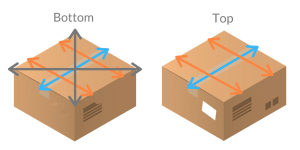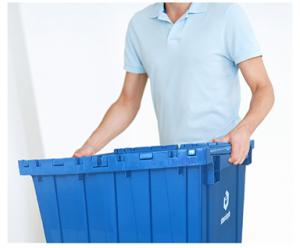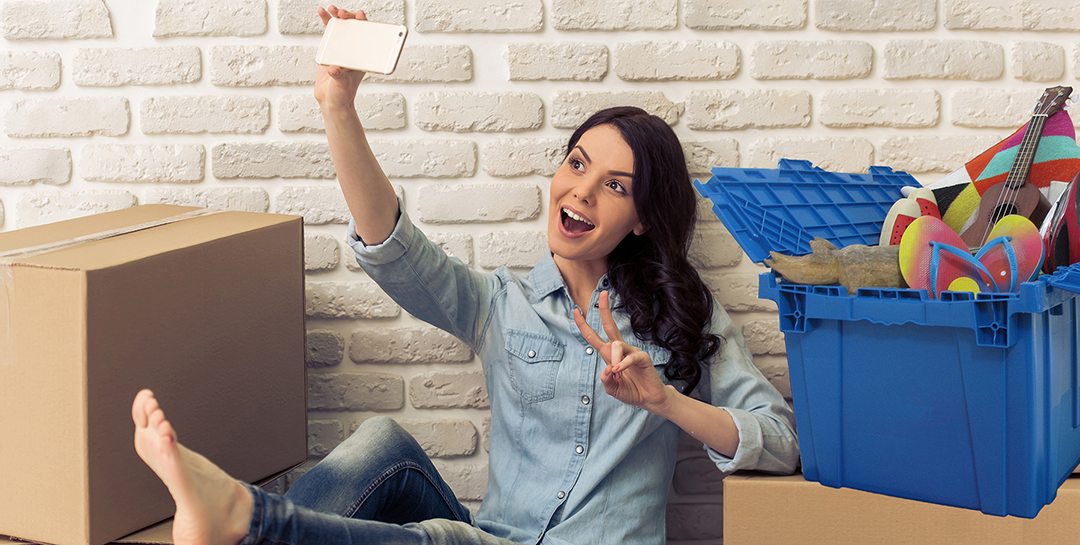Are you facing a move and need moving boxes? We all know that moving is stressful. In fact, it’s cited as one of the top 4 stressors that a person experiences in their lifetime (divorce, loss of a job and loss of a loved one round out the list). What can you do to make moving easier? This is the first in a series of articles dedicated to just that. And we begin with the basics – moving boxes. Why do we start here? Well, we all need moving boxes. And all boxes are not created equal.
Traditionally you can go online or hop over to your nearest home improvement store to buy moving boxes. A less expensive alternative is to call a large retailer and ask if they have cardboard boxes you can use. However, while this may save you some money, it may not be the best long-term option. Why? You may have read our previous blog comparing cardboard vs. plastic moving boxes. If you haven’t, here’s a tidbit you should know – BUGS LOVE CARDBOARD BOXES.
- Bugs (particularly cockroaches and silverfish) make their homes and lay eggs in the corrugated ridge of cardboard boxes
- Cardboard is made from paper pulp (wood), natural fabrics and glue making it an excellent source of food for bugs
- Cockroaches and silverfish saturate cardboard with their scent secretions, and since insects like to live in groups, the saturated cardboard attracts even more bugs
Now that we got the gross stuff out of the way, cardboard boxes are still a great solution for short-term use. They are inexpensive, light weight and recyclable. That’s why are doorways are littered with them. But has your heart ever sank seeing a crushed or wet box coming your way? That’s because cardboard moving boxes aren’t the best for heavy items. For heavy or fragile items use double-wall boxes and make sure to fill empty spaces to prevent crushing.
Also, make sure your boxes are properly taped. Moving professionals suggest that the best way is to properly tape the bottom. Tape down the middle (taping together the 2 larger flaps), corner to corner, and finish with 2 short parallel strips taped perpendicular to your initial down-the-middle taped flap. We know, that’s a lot of tape. And we haven’t even secured the top yet (which should be done with 3 strips of tape, 1 down the middle and then 2 perpendicular strips).

Considering that the average local move uses 15 boxes per room, a 2-bedroom home (with a kitchen, bathroom and living room) requires 75 boxes or 600 strips of tape. Yikes.
Ok, so right now you may be thinking how is this blog making my move easier? If you want to avoid the messy packing tape, damp or crushed boxes and the bugs that come with them, rent plastic moving boxes instead. You can also save 20%-30% by renting plastic bins.

Advantages of Plastic Moving Boxes
- Faster Packing – Plastic boxes don’t require assembly and are easy to pack and stack. We all know time is money, so whether it’s your time or a packing company, you can pack a plastic box in half the time.
- Faster Moves – A not so obvious advantage is that plastic bins are stackable (and have handles). This makes them easy to transport, and load. Their standard size means they use less space on a truck. If you are paying a moving company by the hour, this can save you big bucks.
- Extreme Protection – Heavy-duty plastic bins are crush-proof and water resistant.
- Convenient – Most companies drop them off at your door and pick them back up at your new location.
- Sustainable – Durable plastic bins can be used over 400 times.
If you don’t want empty cardboard boxes piling up after your move, you may consider going plastic. Most big cities have companies renting plastic bins by the week. However, most only rent them for local moves. Curious how much renting moving boxes cost? Simply type rent plastic bins into any search engine. If you are looking to rent plastic boxes in Miami, you can find pricing HERE.
Happy moving 🙂
